Creating engaging and age-appropriate content often means capturing the right tone and voice, especially when producing educational materials, animated content, or children’s audiobooks. Child text-to-speech voiceovers are becoming increasingly essential in this space.
These synthetic voices replicate the sound of a young child’s voice, providing an authentic and relatable audio experience without the complications of hiring real children to record.
If you want to see and test for yourself then you can visit our realistic kid voice generator here!
Why use child text-to-speech voiceovers?

There are several scenarios where child text-to-speech solutions come in handy:
- E-learning modules designed for kids benefit from a youthful tone that matches their audience.
- Storytelling apps and games use childlike narration to build stronger emotional connections.
- Marketing content aimed at families or children can sound more authentic with a child’s voice.
One of the key advantages is flexibility.
With AI tools like Typecast, creators can produce high-quality, emotionally rich performances with minimal effort and maximum scalability.
These AI-driven solutions allow users to fine-tune pronunciation, tone, and pacing, making it easier than ever to generate lifelike narration.
“Subjective evaluations achieved the MOS of 3.95 for speech intelligibility, 3.89 for voice naturalness, and 3.96 for voice consistency.”
– Jain et al., regarding a fine‑tuned child TTS model.
This demonstrates that advanced child text-to-speech systems can produce highly natural and consistent voices—scoring nearly 4 out of 5 in user evaluations.
Whether you’re building an app, animating a video, or narrating a book, child text-to-speech can unlock creative opportunities that were once limited by budget, time, or access to talent.
Examples include:
- YouTube kids content: Narration for animated series or toy unboxings.
- Educational software: Tutorials, quizzes, and reading companions with a youthful tone.
- Game characters: Adding personality and authenticity to child characters in games.
- Virtual assistants: Kid-friendly digital companions in smart devices or chatbots.
The evolution of child text-to-speech technology

Synthetic voices have come a long way in recent years.
According to a research article published in IEEE, recent breakthroughs in deep learning have allowed text-to-speech systems to emulate human intonation and emotional expression at an unprecedented level.
These improvements are especially important for child text-to-speech models, which require subtle adjustments in pitch, tone, and articulation to sound believable.
The most advanced solutions don’t just “sound young”—they feel young.
This can mean the difference between a flat, robotic delivery and one that actually resonates with a child listener.
Choosing the right text-to-speech voices
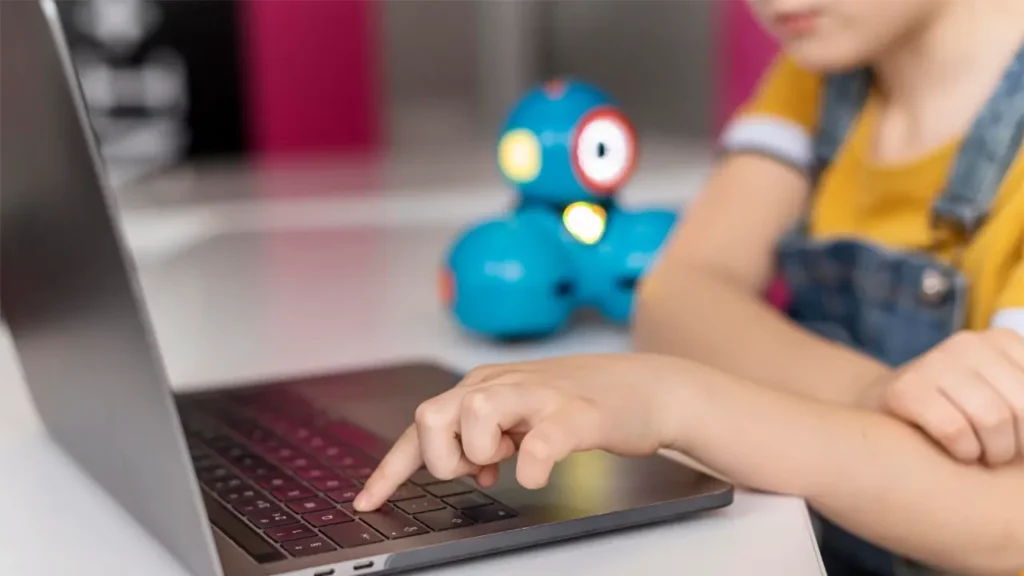
Not all AI voices are created equal. When selecting child text-to-speech voiceovers, it’s important to choose from platforms that offer specialized text-to-speech voices trained specifically to mimic children.
Tools like Typecast’s text-to-speech include characters that sound playful, emotional, and age-appropriate.
Key qualities to look for in child text-to-speech voices:
- Natural tone: Avoid overly robotic or artificial-sounding speech.
- Appropriate pacing: Children often speak at a different rhythm—good TTS voices should reflect that.
- Age-specific tone: Younger children vs. preteens have noticeable vocal differences.
- Multilingual support: Especially useful for educational content that caters to diverse audiences.
- in smart devices or chatbots.
Benefits of using AI for child voiceovers

Hiring child voice actors can be expensive and fraught with challenges like labor laws, availability, and ethical concerns.
Child text-to-speech bypasses these issues entirely.
Advantages include:
- Scalability: Generate unlimited audio with consistent quality.
- Cost-efficiency: No need for studio bookings or repeat sessions.
- Speed: Produce content quickly with instant edits and revisions.
- Ethical flexibility: Avoid concerns around child labor or safety in recording environments.
How to get child text-to-speech voiceovers with Typecast.ai
To get your own child text-to-speech voiceovers follow our simple step-by-step guide below!
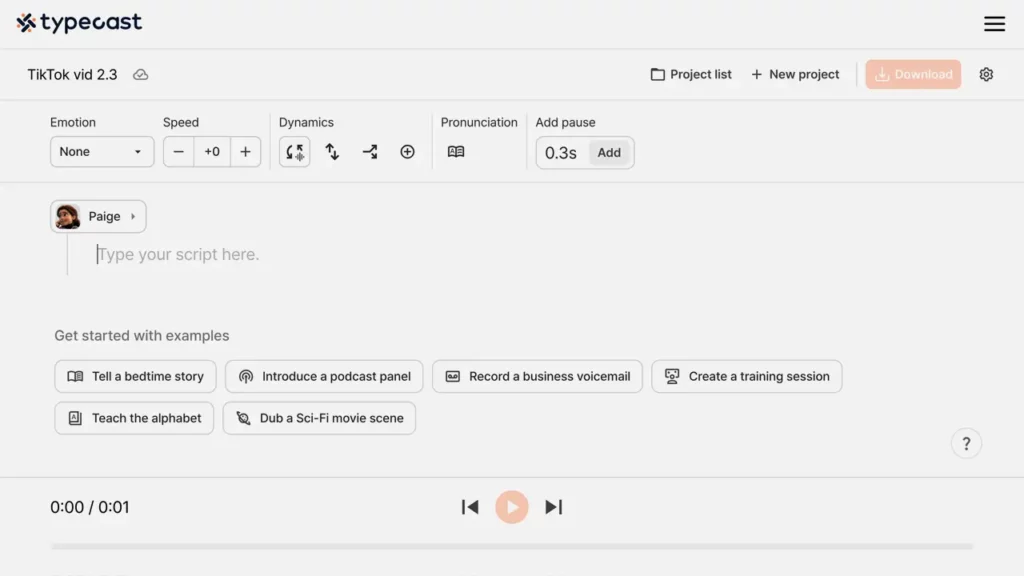
- Visit Typecast’s Text-to-Speech tool.
- To get a child AI voice, click on the character icon above the text which will bring up the character library.
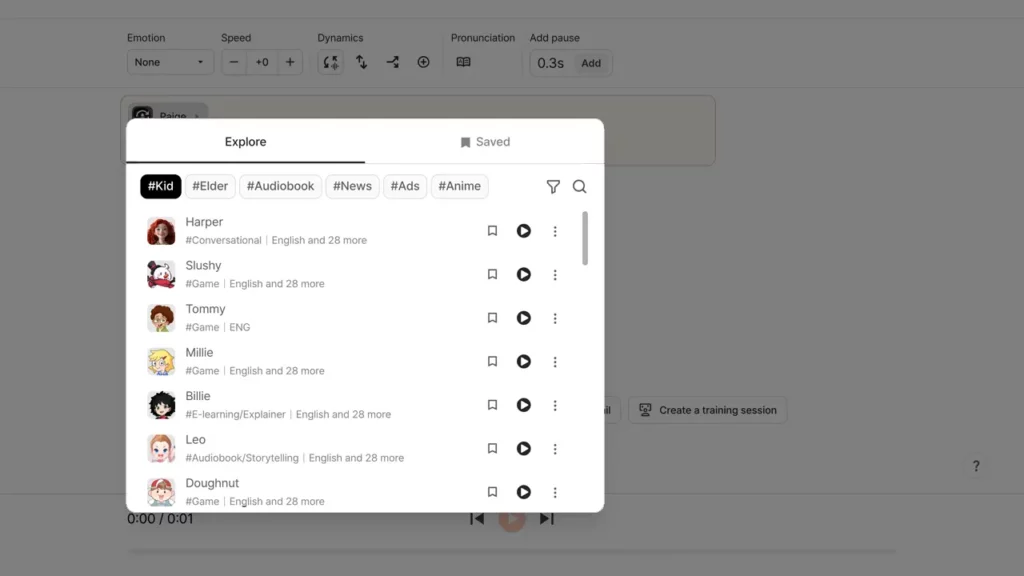
- Select the #Kid hashtag to filter for kid’s voices only.
- Listen to the audio previews of each character until you find the child voice actors you need. You can select more than one AI voice if needed.

- When you have made your selection you can start writing down what you want the child AI voices to say, or simply paste in the script from elsewhere if needed.
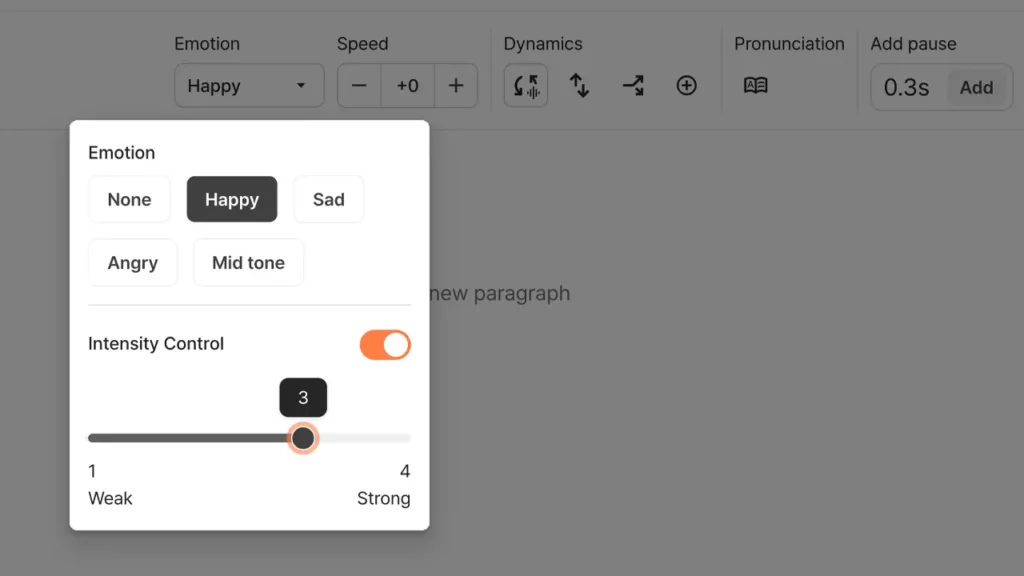
- In the menu at the top, customize each voice over according to the style and persona you need. You can adjust the emotion and the emotion’s intensity that is expressed in the voice over. Tone, speed, intonation, and more can be changed as well.
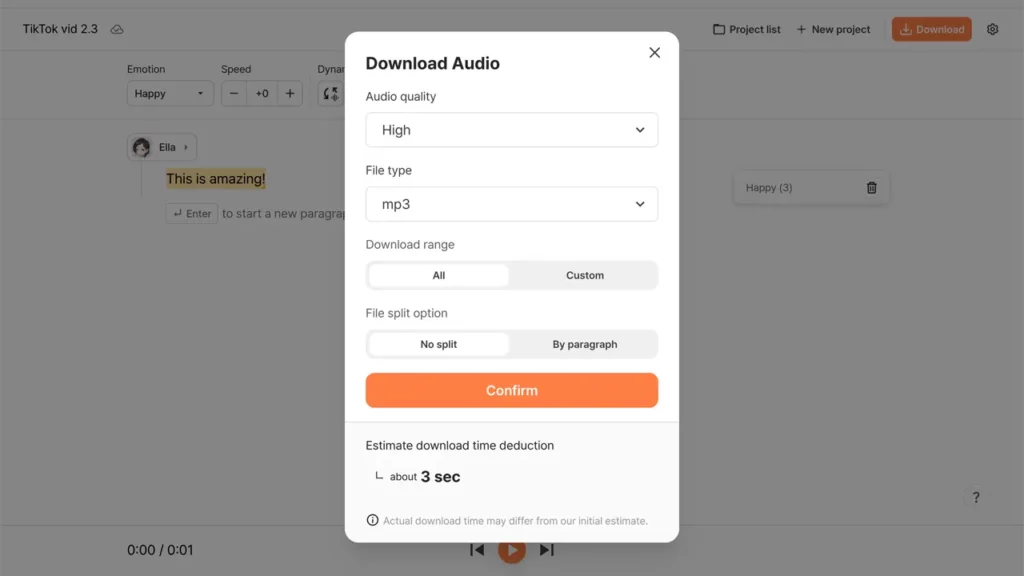
- When you’re finished, click Download. You can download your audio file in an MP3 or WAV format.
Tips for getting the best results from child text-to-speech
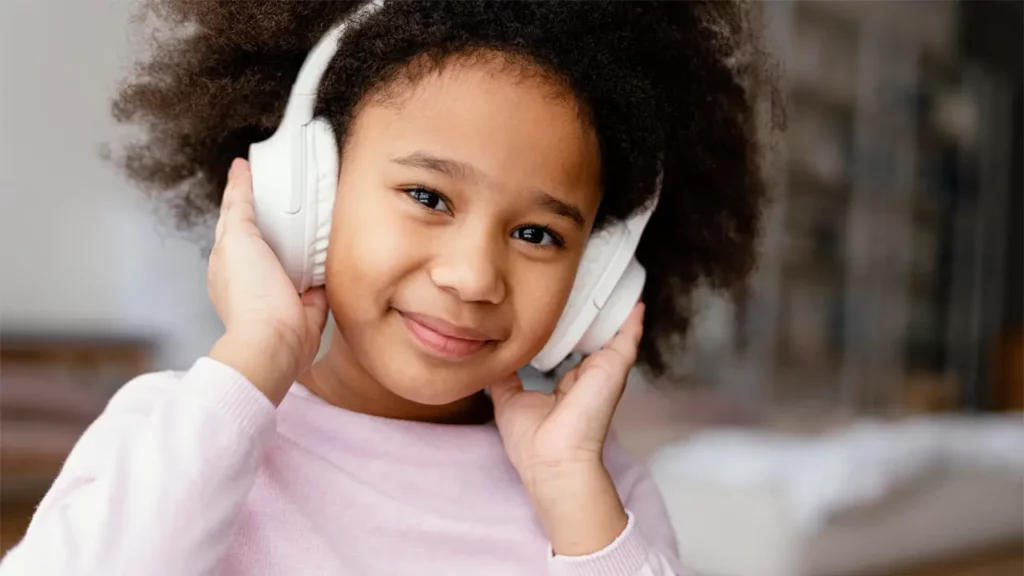
To maximize the quality of your AI-generated voiceovers, consider the following best practices:
1. Choose your platform carefully
Opt for tools that provide a wide variety of text-to-speech voices with clear labeling for child or youthful options.
Typecast is a strong contender, offering voices that suit a range of emotions and scenarios.
2. Script with simplicity
Child voices perform best when the language matches the tone.Keep sentences short, vocabulary simple, and structure clear.
3. Adjust pitch and speed
Use built-in controls to fine-tune the pitch, tempo, and emotion. Slight changes can dramatically affect how “childlike” the result sounds.
4. Use emotion tags if available
Platforms like Typecast offer emotional toggles or tags such as “excited,” “curious,” or “tired.”
These can help you generate more dynamic, human-like voiceovers.
Final thoughts
Child text-to-speech voiceovers have opened up exciting new possibilities in content creation.
Whether you’re building educational tools, storytelling apps, or digital characters, the ability to produce convincing childlike voices on demand is a major advantage.
Tools like Typecast empower creators with a broad range of text-to-speech options, enabling them to find just the right voice for their project.
By leveraging advanced text-to-speech voices, you can deliver a more engaging and tailored experience to your audience without compromising on quality, speed, or budget.









